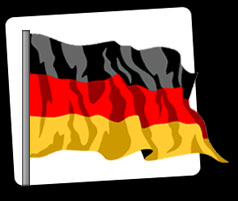Europe's most seriously-endangered language is alive and well
 Saterland, Germany - "The Little Prince" by French author Antoine de Saint-Exupery is one of the best-selling books of all time and it has been translated into around 180 languages.
Saterland, Germany - "The Little Prince" by French author Antoine de Saint-Exupery is one of the best-selling books of all time and it has been translated into around 180 languages.
Thanks to Gretchen Grosser, the heart-warming tale of a pilot who meets a young prince after being forced to land in the Sahara Desert is now available in an obscure Frisian dialect called Sater Frisian or Saterlandic. The tongue is native to Saterland, a corner of Lower Saxony state in north-western Germany, and is spoken by just 2,500 people. Related Frisian dialects are also spoken by groups in Denmark and the Netherlands.
"Translating the book took me 150 hours," said 74-year-old Grosser who has written a number of works in her Saterlandic native tongue. She says she tried to capture the enchantment of the original.
"If you please, draw me a sheep!," the little prince says at one point to the pilot who is also the narrator of the tale. In Sater Frisian this translates as "Baeaest du so goud? Moal mie daach een Skaeip!". Or how about the prince's famously profound observation: "Very simply: you can only see things clearly with your heart." This is given in Satar Frisian as "Man sjucht bloot maed daet Haat goud. Daet Upperste is foar do Ogene nit tou sjoon".
Now the appeal of a book like this is bound to be limited but the work goes to show that this remnant of Old East Frisian - to which it is related - is far from extinct. As far back as medieval times East Frisians began switching from the Saterlandic dialect to Low German but usage became restricted to a north-west part of Cloppenburg district, explains linguistic scientist Marron C Fort.
New Hampshire-born Fort is a naturalised German who speaks German, Dutch, Low German and Sater Frisian fluently. In 1980 he published a Saterlandic Frisian dictionary and was also responsible for a Sater Frisian version of the New Testament.
At the beginning of the 19th century Saterland was virtually an island, more or less cut off from the outside world by impenetrable boglands. This may be one of the reasons why the language was able to survive until today, Fort believes. It is also Europe's most seriously-endangered tongue.
After World War II the population of the region swelled rapidly to 13,000 people as many Germans settled here from other parts of the country. "In the 1990s we also registered 1,500 new citizens from Kazakhstan and of course not one of them speaks Sater Frisian," said local district council head Hubert Frye. A local Saterland association which seeks to preserve local culture, including picturesque windmills, encourages the use of the old language with programmes on regional radio in Sater Frisian.
Teacher Johanna Evers is another champion of this rare language. So far Sater Frisian is taught in only one of the local primary schools. "In the other three it is an extracurricular activity. That means the children who want to learn Frisian have to stay behind at school while the other pupils go home." At the secondary school where she teaches Evers offers the language as an option.
Pre-school children are able to take simple lessons in Sater Frisian thanks to volunteers who come into the nursery schools once a week although their efforts are not always fully appreciated. "In many cases the parents are not too keen on their offspring learning Sater Frisian," said Evers.
It seems some mums and dads are worried that learning Saterlandic words my overtax their offspring. Evers does not share the concerns and points to research which indicates that children who grow up with several languages instead of one usually do better at school.
"It is important that the language is spoken in the home," said Karl-Peter Schramm, a native of Sater Frisia and President of the European Bureau for Linguistic Minorities in Germany. He would like to see Frisian speakers adopt a higher profile locally. Bilingual village signs have been in place since 2001 but there is little outward sign of Sater Frisian heritage in the four communities where it is most spoken.
Author Fort is a passionate advocate of Saterlandic and hopes that it survives. He came to the area as a young researcher many years ago and learnt the vocabulary at first hand from elder villagers. "I truly love this language," said the language expert. (dpa)